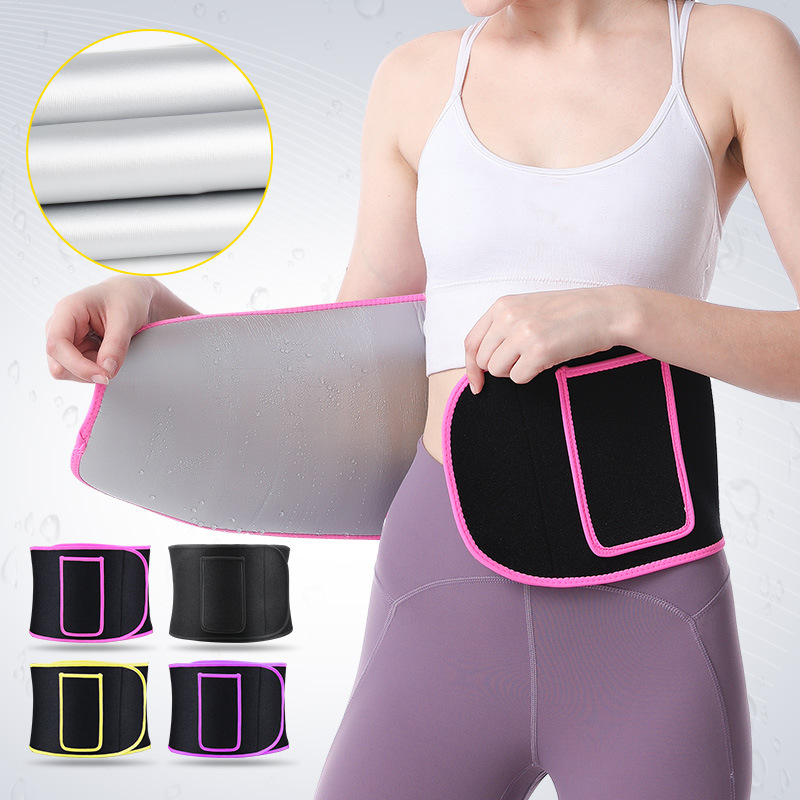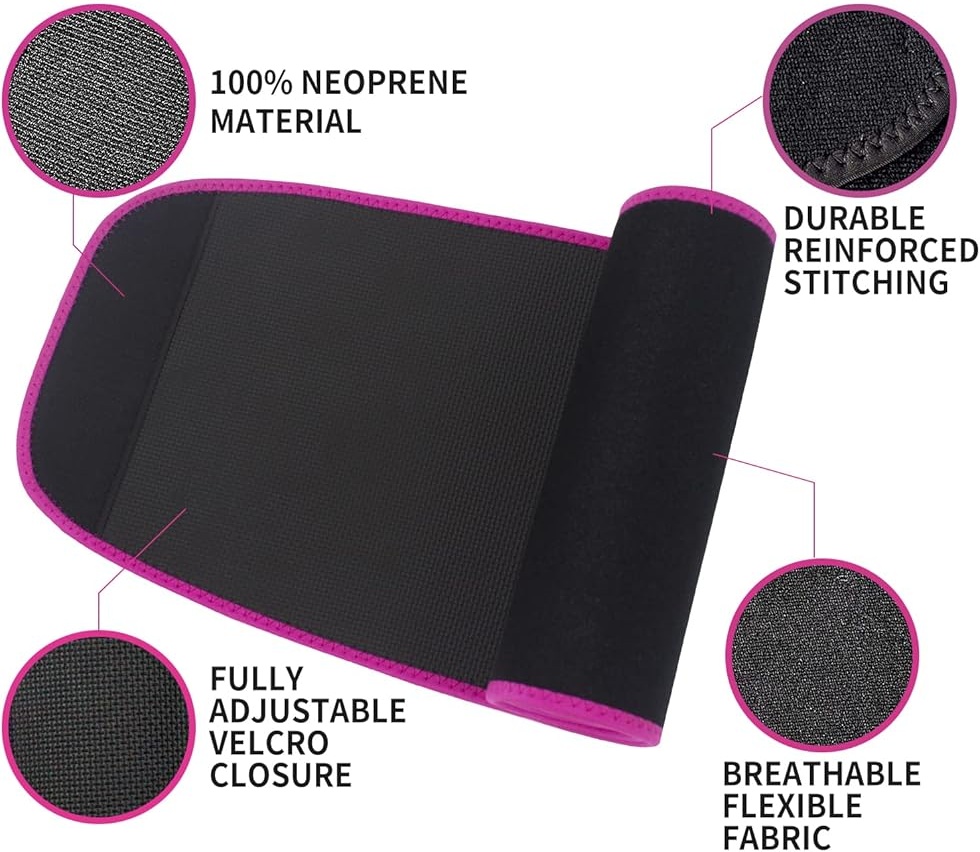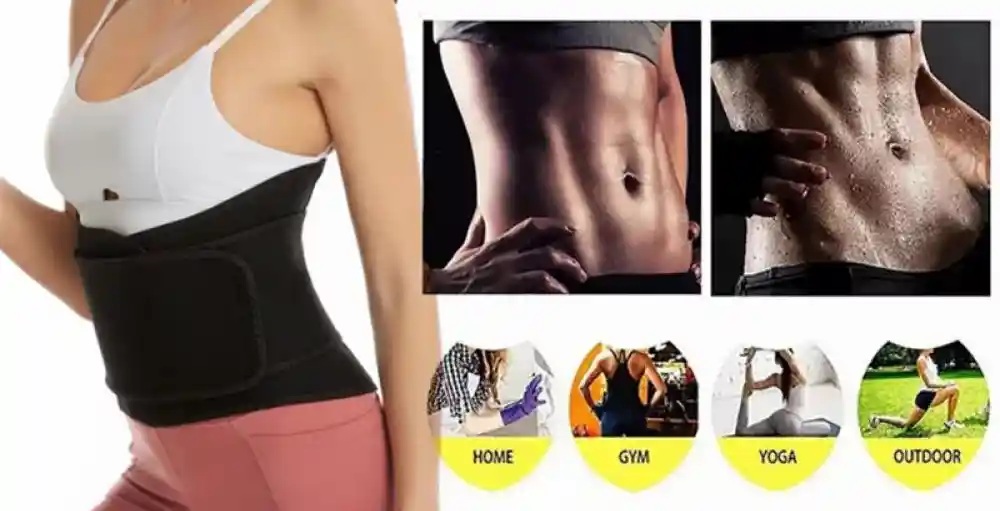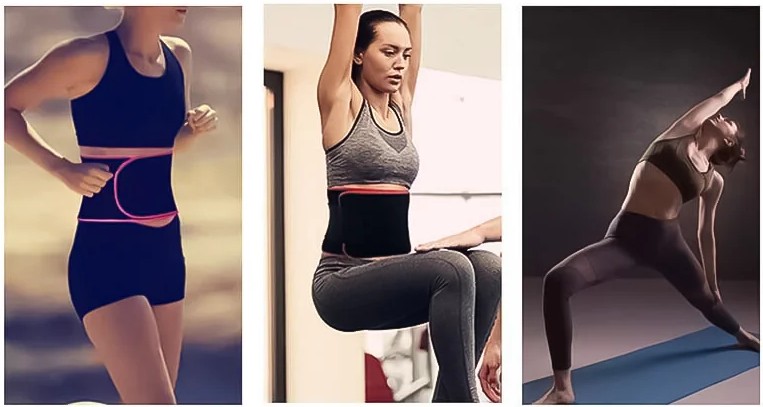In the realm of fitness and health, various tools and accessories have emerged to enhance workout performance, aid in weight loss, and provide support to various body parts. Among these, waist sweat belts have gained significant popularity due to their versatility and effectiveness. This comprehensive guide delves into the world of waist sweat belts, exploring their functions, benefits, and practical applications.

What is a Waist Sweat Belt?
A waist sweat belt, also known as a waist trimmer or waist cincher, is a garment designed to be worn around the midsection during physical activities. It is typically made of breathable materials such as neoprene, polyester, or a combination of these, with some models incorporating steel bones or adjustable straps for added support and customization. The primary purpose of a waist sweat belt is to increase perspiration around the abdominal area, leading to increased calorie burn and potential weight loss.
Understanding the Science Behind Sweat Belts
The effectiveness of waist sweat belts lies in their ability to create a localized heat and moisture environment around the waist. As the body exerts itself during exercise, muscles generate heat, and blood flow increases to the skin's surface to dissipate this heat through sweating. The waist sweat belt traps this moisture, creating a sauna-like effect that promotes increased evaporation of sweat, which in turn leads to a cooling sensation. However, it's crucial to note that it's not the sweating itself that burns calories but rather the physical activity that triggers the process.

Key Benefits of Waist Sweat Belts
Increased Calorie Burn: By promoting localized sweating, waist sweat belts can, in theory, lead to a slight increase in calorie expenditure during exercise. While the magnitude of this effect is debated, some studies suggest that wearing a sweat belt during high-intensity interval training may result in a modest elevation in calorie burn.
Improved Posture and Support: Many waist sweat belts incorporate steel bones or adjustable straps, which provide additional support to the core muscles. This can help improve posture, reduce back pain, and even aid in injury prevention during exercise.
Motivation and Goal Setting: For those looking to lose weight or tone their midsection, wearing a waist sweat belt can serve as a visible reminder of their fitness goals. It can motivate individuals to push harder during workouts and stay committed to their health and fitness journey.
Convenience and Portability: Waist sweat belts are lightweight, easy to wear, and can be used in various settings, from the gym to outdoor activities. They are a convenient accessory that can be packed in a gym bag or carried around with ease.

Practical Applications of Waist Sweat Belts
High-Intensity Workouts: Waist sweat belts are particularly useful during high-intensity workouts such as HIIT (High-Intensity Interval Training), running, or cycling. The added heat and compression can help push the body harder and potentially lead to increased calorie burn.
Weight Loss and Toning: For those looking to lose weight or tone their midsection, incorporating waist sweat belts into their workout routine can be a helpful tool. However, it's essential to remember that weight loss is ultimately achieved through a combination of diet and exercise, and waist sweat belts should be seen as a supplementary aid rather than a standalone solution.
Postpartum Recovery: For new mothers, waist sweat belts can provide additional support to the abdominal muscles as they recover from the stresses of pregnancy and childbirth. They can help reduce back pain, improve posture, and even aid in the reduction of postpartum swelling.
Injury Prevention and Rehabilitation: In some cases, waist sweat belts can be used as a tool for injury prevention or rehabilitation. By providing additional support to the core muscles, they can help reduce the risk of injury during exercise and aid in the recovery process.
Potential Drawbacks and Considerations
While waist sweat belts offer numerous benefits, it's essential to consider their potential drawbacks and limitations. For instance, prolonged use of waist sweat belts can lead to overheating, dehydration, and skin irritation. Additionally, relying solely on waist sweat belts for weight loss can be ineffective and potentially harmful if not combined with a healthy diet and regular exercise.

Conclusion
In conclusion, waist sweat belts are a versatile and effective accessory that can enhance workout performance, aid in weight loss, and provide additional support to the core muscles. However, it's crucial to use them wisely, combining them with a healthy diet and regular exercise for optimal results. By understanding the science behind waist sweat belts, recognizing their benefits and limitations, and incorporating them into a comprehensive fitness plan, individuals can maximize their potential and achieve their health and fitness goals.
Post time: Jul-22-2024
